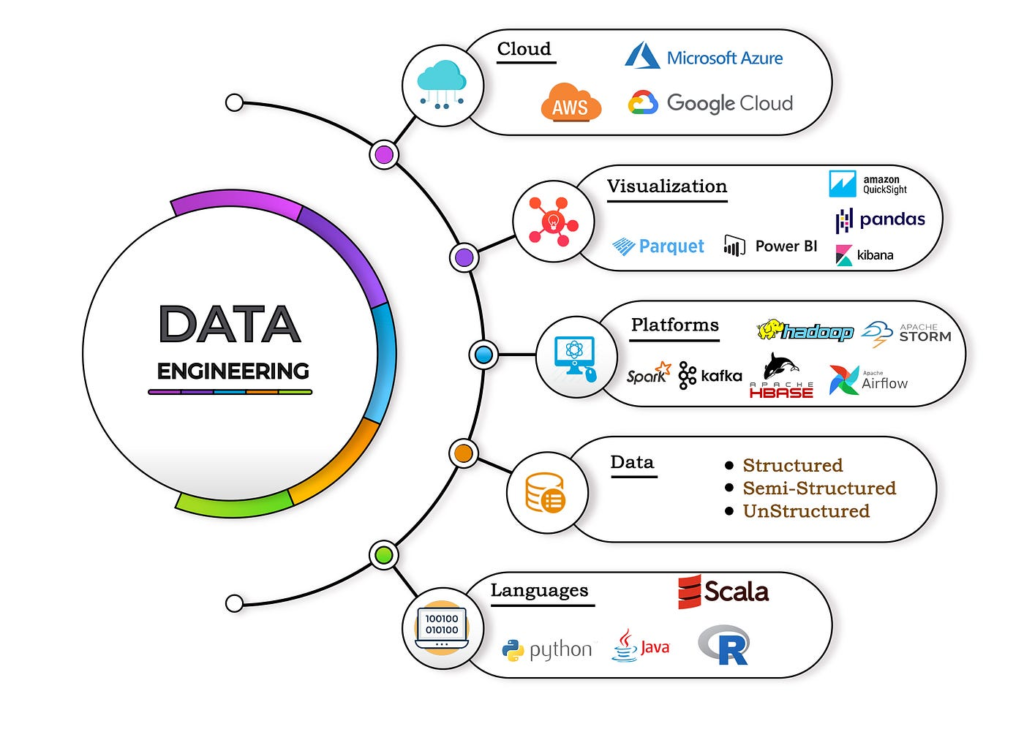
In the rapidly evolving world of data, mastering the key concepts of data engineering is crucial for building robust, scalable systems that empower data-driven decisions. Whether you’re a seasoned pro or just starting, here’s a concise guide to the foundational aspects of data engineering:
1. 𝐃𝐚𝐭𝐚 𝐄𝐧𝐠𝐢𝐧𝐞𝐞𝐫𝐢𝐧𝐠: It’s all about designing, building, and maintaining systems that collect, store, and process massive amounts of data, making it ready for analysis and business use.
2. 𝐃𝐚𝐭𝐚 𝐄𝐧𝐠𝐢𝐧𝐞𝐞𝐫𝐢𝐧𝐠 𝐯𝐬. 𝐃𝐚𝐭𝐚 𝐒𝐜𝐢𝐞𝐧𝐜𝐞: Data engineering focuses on the infrastructure and pipelines, while data science extracts insights, builds models, and solves business problems.
3. 𝐄𝐓𝐋 (𝐄𝐱𝐭𝐫𝐚𝐜𝐭, 𝐓𝐫𝐚𝐧𝐬𝐟𝐨𝐫𝐦, 𝐋𝐨𝐚𝐝):This is the backbone of data movement, ensuring data is extracted from sources, transformed into a usable format, and loaded into databases or data warehouses.
4. 𝐃𝐚𝐭𝐚 𝐈𝐧𝐠𝐞𝐬𝐭𝐢𝐨𝐧: The first step in data processing—importing data from various sources into a system where it can be analysed.
5. 𝐃𝐚𝐭𝐚 𝐏𝐢𝐩𝐞𝐥𝐢𝐧𝐞: Think of it as an automated workflow that moves data from one place to another, often involving data transformation along the way.
6. 𝐃𝐚𝐭𝐚 𝐓𝐫𝐚𝐧𝐬𝐟𝐨𝐫𝐦𝐚𝐭𝐢𝐨𝐧: This involves converting data into a format that suits your needs, ensuring compatibility and enhancing data quality.
7. 𝐃𝐚𝐭𝐚 𝐖𝐚𝐫𝐞𝐡𝐨𝐮𝐬𝐞: A centralized hub for storing structured data from multiple sources, optimized for fast query and analysis.
8. 𝐃𝐚𝐭𝐚 𝐌𝐨𝐝𝐞𝐥𝐥𝐢𝐧𝐠: The process of creating a visual representation of your data structures, ensuring that your data is organized and accessible.
9. 𝐒𝐐𝐋 𝐢𝐧 𝐃𝐚𝐭𝐚 𝐄𝐧𝐠𝐢𝐧𝐞𝐞𝐫𝐢𝐧𝐠: The go-to language for querying and managing data in relational databases—essential for data manipulation and retrieval.
10. 𝐃𝐚𝐭𝐚𝐛𝐚𝐬𝐞 𝐈𝐧𝐝𝐞𝐱: A powerful tool to speed up data retrieval by providing quick access to data in a database table.
💡 𝐏𝐫𝐨 𝐓𝐢𝐩: Mastering these concepts not only sharpens your data engineering skills but also positions you as a key player in your organization’s data strategy.